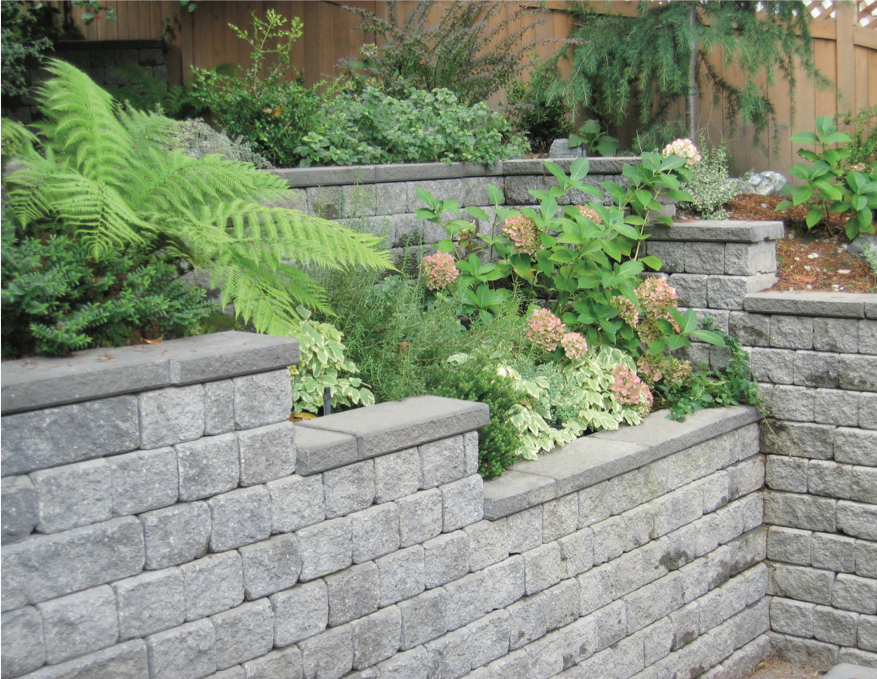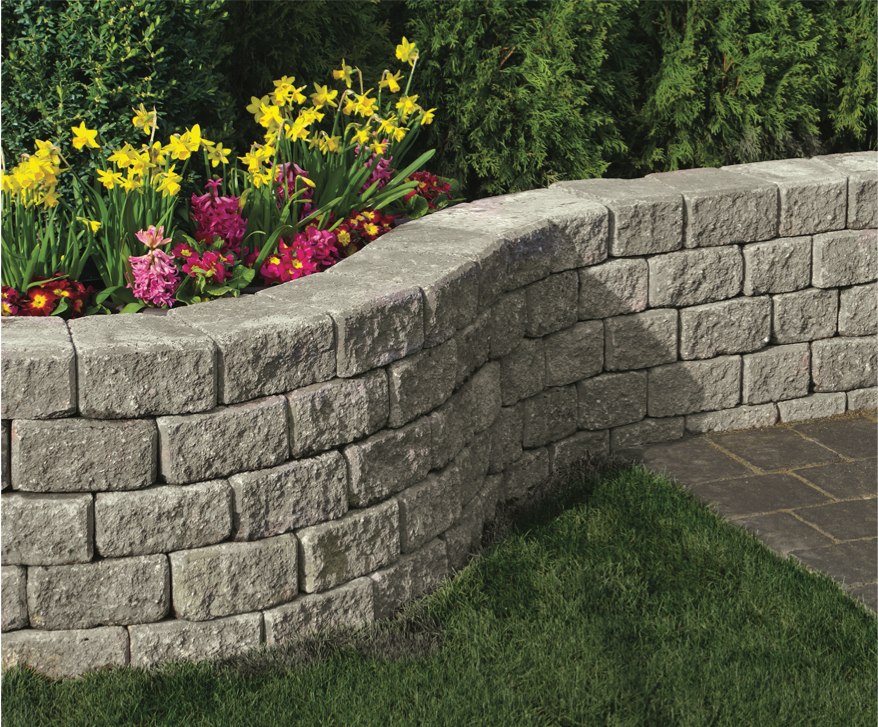Thinking of building a retaining wall for organic gardening but not sure where to start? There are a number of building material options that can be considered, but concrete retaining wall design is one of the best. Concrete block for retaining walls is easy to build with, can be stacked, moved, and extended. It is better for drainage, is durable, and provides design flexibility at a relatively low price. A retaining wall is a functional landscaping and hardscaping choice, but it is beautiful, too. It adds a tremendous amount of curb appeal and home improvement, which can increase property values for homeowners.
Shop Concrete Retaining Wall Blocks
Why a Retaining Wall for a Steep Hillside?
If you are a California or the Pacific Northwest homeowner, you are likely familiar with retaining wall usage in hardscape and landscape design to make the most of front yard and patio areas for outdoor living. By adding a retaining wall and extra topsoil, a sloped hill in your outdoor space can be transformed into a flattened garden bed ready for planting. Hills have the highest rates of erosion because rain can carry the soil downward. Heavy downpours of rain, high winds, and melting snowfall all contribute to soil erosion. As the topsoil is washed away, so are important nutrients that feed plants. Roots also become exposed, which causes the plants to wilt and die off. Adding a retaining wall can help with preventing flooding and soil erosion, keeping the soil in place. Retaining walls can also add more functional outdoor space allowing for more plant and water feature additions.
Shop Traditional Retaining Wall Blocks
DIY Retaining Wall Ideas for a Greenery Makeover
There are a number of steps involved in creating your own DIY planter and retaining wall. You have a couple of options in terms of planter material: wood, plastic, terra cotta, and upcycled material. Wood is a natural material but may weather over time, has a variety of shapes and sizes, and has a low impact on the environment, but often a higher consumer cost. Plastic is inexpensive and easy to find but has a high impact on the environment. It is lightweight and breaks down quickly when exposed to sunlight. Darker colors may absorb heat when left in the sun causing the soil to dry out frequently. Terra Cotta absorbs water, so the soil may dry out quickly. This material may crack if soil is left in the pots over winter. It is beautiful and decorative, but size is limited, and larger pots are difficult to move around. Upcycled material may need drainage holes but comes in all shapes and sizes and is often free.
The garden bed should be placed open on the bottom to allow for proper drainage. Additional watering of your garden may be necessary as the wall seams can drain faster. Since concrete heats up in the sun, the temperature of the soil can rise, causing increased evaporation and drying. You will want to consider extra watering and placing your garden in an area that gets both sun and shade. You should make sure that your garden bed is at least 12 inches deep as most common vegetable plants need this minimum amount of soil to grow. In addition to increasing root space, providing ample depth and soil will reduce water runoff and keep the soil moist longer, which will be extremely helpful when the concrete gets hot.
Keep in mind that hard surfaces will prevent beneficial creatures like earthworms from entering raised garden beds from other parts of your yard. Live amendments and worms can help improve your soil health. Since concrete is alkaline, there is the risk of it raising the pH over time, but occurrences of this are pretty rare. Test periodically with pH meter and adjust as required. Additional measures like lining the bed and potting the plants can be taken to regulate the pH.
Retaining Wall Project Design Ideas for a Beautiful Garden
Choosing the size of your planter is important not only for ease of accessibility and low maintenance building but also making sure you are not exceeding the manufacturer’s recommended height, which may require a city permit. A good and accessible size is roughly 4 feet wide by 16 feet long, and about 18 inches high. The location of your planters is also important depending on how much sun and shade you need for what you are growing. Most vegetables need to get full sun for at least six hours per day. Lettuces will grow in dappled light, so these plants are excellent for containers or planters located in semi-shade. Plants that are easier to grow in containers include lettuce, carrots, cucumbers, tomatoes, herbs, squash, strawberries, peppers, and beans.
When building your garden, make sure the wall blocks are level every step of the way. Lining the bed to prevent weeds and leaking is a great idea. Topsoil is recommended over potting soil as it will last longer and require less replacing. Potting soil is more expensive and decomposes faster.
Shop Mediterranean Retaining Wall Blocks




